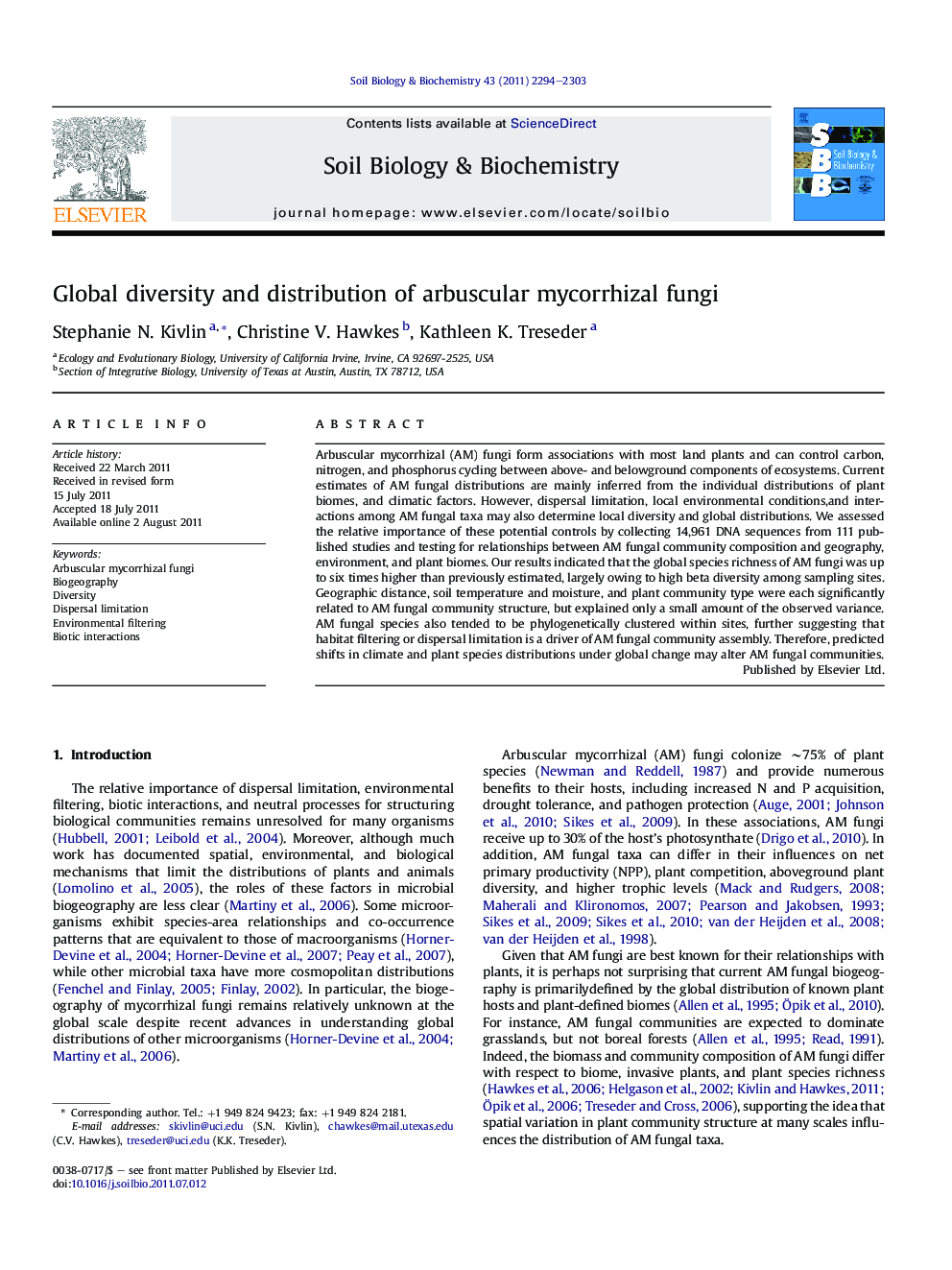| Article ID | Journal | Published Year | Pages | File Type |
|---|---|---|---|---|
| 2025037 | Soil Biology and Biochemistry | 2011 | 10 Pages |
Arbuscular mycorrhizal (AM) fungi form associations with most land plants and can control carbon, nitrogen, and phosphorus cycling between above- and belowground components of ecosystems. Current estimates of AM fungal distributions are mainly inferred from the individual distributions of plant biomes, and climatic factors. However, dispersal limitation, local environmental conditions,and interactions among AM fungal taxa may also determine local diversity and global distributions. We assessed the relative importance of these potential controls by collecting 14,961 DNA sequences from 111 published studies and testing for relationships between AM fungal community composition and geography, environment, and plant biomes. Our results indicated that the global species richness of AM fungi was up to six times higher than previously estimated, largely owing to high beta diversity among sampling sites. Geographic distance, soil temperature and moisture, and plant community type were each significantly related to AM fungal community structure, but explained only a small amount of the observed variance. AM fungal species also tended to be phylogenetically clustered within sites, further suggesting that habitat filtering or dispersal limitation is a driver of AM fungal community assembly. Therefore, predicted shifts in climate and plant species distributions under global change may alter AM fungal communities.
► We synthesize how dispersal, and abiotic and biotic interactions affect AM fungi. ► Diversity of AM fungi was six times higher than previously estimated. ► Distance, soils, and plant communities each affected AM fungal composition. ► AM fungal species also tended to be phylogenetically clustered within sites.
